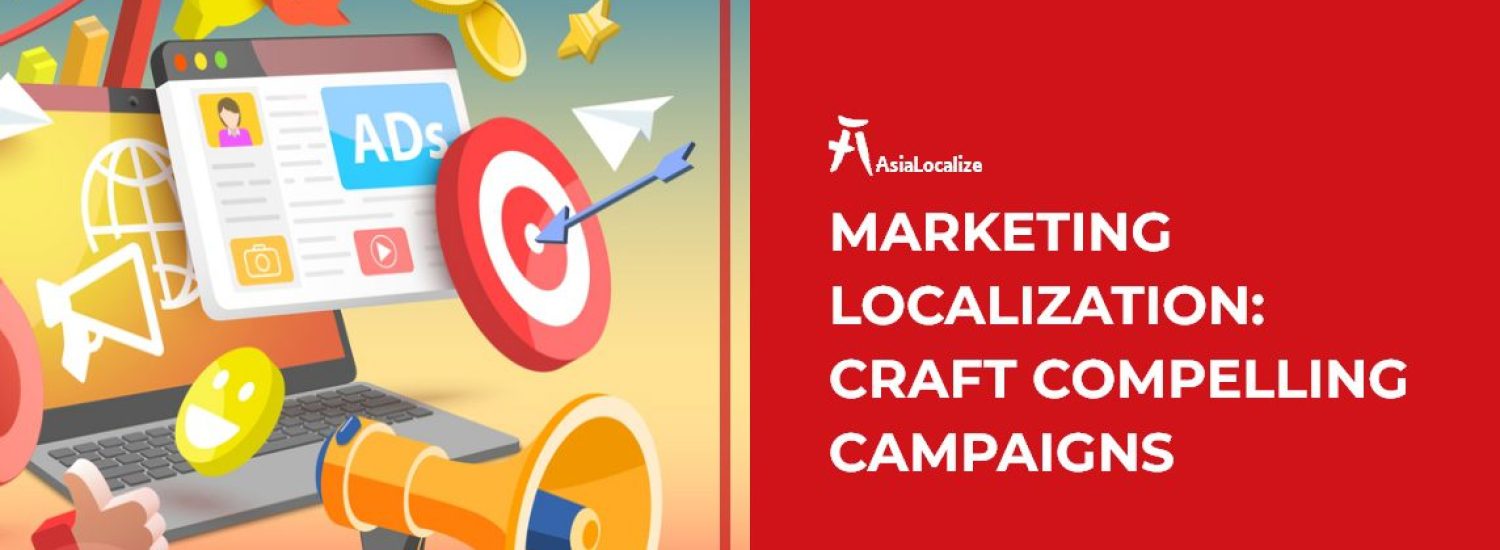At its core, marketing is about more than just creating a buzz in the targeted market. It’s about crafting messages that can forge a deep connection with your audience, enticing them to take action without hesitation.
While marketing for a local brand may seem effortless, the complexity multiplies when businesses set their sights on global markets.
Each audience has its own language, preferences, cultural conventions, purchasing and search behavior, values, and challenges. Each requires a different approach with fully customized messages.
Imagine being able to replicate the same impact you’ve had on your local audience on a global scale. This is the transformative power of marketing localization.
Sounds interesting? Keep reading; we’ve compiled all the essential information about marketing localization to help you make a significant impact in your next expansion venture.
What is Localization in Marketing?
Localization in marketing is the process of adapting your marketing content for a new audience in different regions so it can make the same powerful impact it did in your local market.
It’s how you allow your target audiences to feel right at home. That’s not only through language but also by paying full attention to their local customs, values, cultural preferences, and purchasing and search behavior.
A specific blend of the appropriate keyword and tone with the most suitable design and colors on the right social media platform can distinguish between something loved or laughed at!
So, What Is Usually Involved In The Process of Marketing Localization?
First things first, the process starts with the accurate and culturally senstive translation of all your marketing content, including websites, brochures, ads, and product descriptions, into the local language(s) of your target markets.
Then, what follows is a series of considerations every business must account for when tailoring their marketing localization strategy. While translation here makes sure all written content is understandable and relevant for target audiences, you all need to make sure that:
- Your localized advertising content addresses the specific needs, preferences, and pain points of your target audience in each market.
- Your content speaks the regional dialect of people in the target market to effectively connect with them and build long-term international relationships.
- Visual elements such as images, graphics, colors, and symbols are all adapted to appeal to the aesthetic preferences and cultural norms of your target audience.
- You tailor the style, tone, and format of your marketing content
- You use the most effective and widely used marketing channels and platforms in your target markets, such as social media networks, search engines, or e-commerce sites.
- You adapt your marketing strategies and tactics to align with the unique characteristics and user behaviors of each platform in different countries or regions.
However, in some cases, the process may require significant alterations to the business model and product itself. Companies like McDonald’s, Domino’s Pizza, and Dunkin Donuts have successfully navigated this path, adapting their products and services to local tastes and preferences, a strategy known as product adaptation.

- McDonald’s: They have created customized menus for specific markets, such as McSpaghetti for the Philippines and Chicken McArabia for the Middle East while maintaining their brand identity.
- Domino’s Pizza: They tailored their pizza toppings to cater to regional preferences, such as seafood in Asia and curries in India.
- Dunkin Donuts: The dry pork and seaweed donut has made its way to the top favorites among the Chinese, crafted just for them.

Why Does It Matter to Have a Localized Marketing Strategy?
When it comes to expanding your business in global markets, opting for standardization may seem like the easiest route, but it’s not always the most effective.
To ensure guaranteed results, localization should be your go-to approach. And to further bolster the effectiveness of your efforts, it is recommended to develop a sound marketing localization strategy.
Here is why it’s crucial to put together a localized global marketing strategy:
- Localized Marketing Translated Into A Massive Increase In Sales
Did you know that Coca-Cola used a hyper-localization strategy to become India’s top-selling soft drink?
They localized their marketing content, campaigns, and packaging and managed to capture a staggering 60% of India’s market share. And with localized marketing, they also created tailor-made products like the grape sparkling drink designed explicitly for Indians in the State of Tamil Nadu, which has proven to be a hit with locals.

- Guess what? Marketing Localization Has a Significant Impact on The Satisfaction of Your Customers
Where marketing localization exists, there will always be a happy customer. Let’s say that, in general, customer satisfaction is really tied to how much you invest in localization efforts.
Localized ads mean a more personalized customer experience, fewer cultural pitfalls, and deeper connections, which can build long-lasting relationships with the global audience. And if we say anything, a positive experience is more valued than price.
Happy customers tend to spend more, shop longer, and spread positive word-of-mouth everywhere.

- Marketing Localization Helps You Steer Clear of Potential Risks
A well-executed marketing localization strategy enables you to align with the specific cultural, legal, and regulatory landscapes of each target market.
When you invest more in a thorough understanding of your target market’s local customs, values, and preferences, you avoid missteps that might be perceived as culturally insensitive or offensive, thereby preventing potential damage to your brand reputation.
Legal compliance becomes even particularly important in advertising and marketing, where legal frameworks dictate what can be promoted and how. That’s why without proper localization, you risk facing legal penalties, fines, or outright bans on their marketing materials, which can be costly and damaging to your market presence at a time where you strive to make a lasting positive impression..
Crafting Compelling Localized Marketing Campaigns: Essential Tips and Tricks
Unsurprisingly, crafting compelling localized marketing campaigns is not a cakewalk. It’s a task that requires extensive research, hard work, and a deep understanding of the target market. However, digital marketers can improve the effectiveness of their marketing efforts in foreign lands by following these steps:
Conduct Thorough Market Research
You don’t want to offend your potential customers and waste all your hard work due to a wrongly selected color or inappropriate packaging, such as a Christmas-themed one in a non-Christian country. The latter could ruin your marketing efforts, even if your product/service is of great value.
Also, you don’t want your local competitors to eat you for lunch, leaving no doors for you to open.
That’s why it’s essential to grasp your target market and audience before initiating any step. This way, you will be able to craft relevant marketing messages that resonate with their expectations.
It’s time to dig in; make sure to collect these necessary data from a local team:
- Your Audience’s Demographics
- Their Linguistic Needs (Slangs and Dialects)
- Cultural Sensitivities
- Their Pain Points
- Their Purchasing Behavior
- Their Search Behavior
Choose the Right Keywords and Platforms
Choosing the right keywords and platforms is a crucial part of digital marketing localization. People search for products and services differently from one region to another.
To reach your target customer and rank on the first pages, it’s important to choose the right keywords for your market and optimize your website accordingly. This will ensure that your content is easily discoverable.
A tip for you: remember to create SEO-friendly blog posts and landing pages using regional keywords.
Also, choose the right social media platform for your audience and create a separate account for each market. For instance, if you are targeting Russia, VK might be a better choice than Facebook.

Localize Your Visual Content
Visuals that work in one market or culture might not work in another. Local marketing campaigns can go wrong with minor errors, such as placing the wrong color combination together.
Localizing visual content may involve adapting designs, colors, imagery, symbols, layouts, content format and size, aspect ratio, resolution, and file type to ensure they align with the local market’s cultural context, aesthetics, and branding.
It’s a complex process that requires local experts who aren’t only aware of design secrets but also have insights into the target market’s preferences and cultural nuances.
Humanize Your Marketing Campaigns
Let’s face it: consumers are now more skeptical about traditional marketing tactics than ever. It’s no secret that people want to do business with companies they can trust, and one of the best ways to build trust is by showing the human side of your brand.
Beyond just selling a product/service, create a deep emotional connection with your audience. Incorporate human elements into your marketing campaigns, such as embracing slang and featuring local holidays in your campaign schedule.
While marketing translation services could be a real challenge, AsiaLocalize has been in the industry for over 12 years and is well-equipped with professional localization and marketing teams to handle even the most complex projects. We are ready to craft the most powerful marketing campaigns in 120 languages with the most creative linguistic experts in every language and market.
We’ve cracked the code of your target market!






